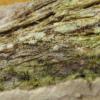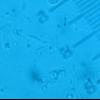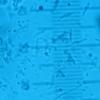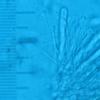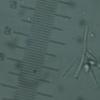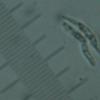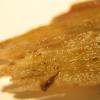
02-01-2026 17:43
MARICEL PATINOHi there, although I couldn't see the fruitbody, I

01-01-2026 18:35
Original loamy soil aside a artificial lake.The co

31-12-2025 19:27
Collected from loamy soil, at waterside (completel

30-12-2025 16:44
Pascal DucosBonjour,Une anamorphe rose stipitée, très nombre

30-12-2025 17:14
 Bernard CLESSE
Bernard CLESSE
Bonjour à toutes et tous,Pourriez-vous aider Albe
Orbilia on Sorbus
Marja Pennanen,
20-03-2011 22:07
I found today some 0.1-0,2 mm wide Orbilias on Sorbus aucuparia bark on the hight of about 1 m from snow level. The outer layer of the bark was gone and there were some polypores growing on the tree too. I thought they were O. coccinella and put only little efford on taking photos and it shows ;)
Marja Pennanen,
20-03-2011 22:12
Marja Pennanen,
20-03-2011 22:16
Hans-Otto Baral,
20-03-2011 22:58

Re:Orbilia on Sorbus
Difficult to say with dead material. Your scale, is it 2 µm per step?
I assume the ascus is hemispherical and thick-walled. Oh no, I see the paraphyses are capitate, so probably the asci are thinwalled and partly truncate. I assume it is O. subtrapeziformis, a species typical of montaneous or boreal areas.
Zotto
I assume the ascus is hemispherical and thick-walled. Oh no, I see the paraphyses are capitate, so probably the asci are thinwalled and partly truncate. I assume it is O. subtrapeziformis, a species typical of montaneous or boreal areas.
Zotto
Marja Pennanen,
21-03-2011 11:35
Re:Orbilia on Sorbus
Hi Zotto,
thanks :)
I had really hard times trying to determine this. I can take another look later. I saw no spore bodies, so the spores may be dead, maybe some other fruitbodies can reveal something.
Marja
thanks :)
I had really hard times trying to determine this. I can take another look later. I saw no spore bodies, so the spores may be dead, maybe some other fruitbodies can reveal something.
Marja
Hans-Otto Baral,
21-03-2011 13:29

Re:Orbilia on Sorbus
O.k., it seemed to me you have only two tiny ones. If you have more, yes: look for living spores. They should contain a long and narrow spore body.
I asume your photos were made without oil immersion? What's the scale's meaning?
Zotto
I asume your photos were made without oil immersion? What's the scale's meaning?
Zotto
Marja Pennanen,
21-03-2011 21:47
Re:Orbilia on Sorbus
Hi Zotto,
I used 500x meaning, that factor 2x should be used with the scale. Oil immersion doesn't help now. The details show better with 500x than 1000x with my poor light condition.
I think I saw some living spores, but can't say a thing about the spore bodies. Inside asci were some narrow lines. I've noticed, that with my microscope spore bodies may be sometimes seen easiest inside the asci. The short tail like seems sometimes to move in water as if the spore was trying to behave like a dog ;)
Hopefully I have this week time to go to the university with the specimen and look there. I've still got maybe 10 fruitbodies left...
Marja
I used 500x meaning, that factor 2x should be used with the scale. Oil immersion doesn't help now. The details show better with 500x than 1000x with my poor light condition.
I think I saw some living spores, but can't say a thing about the spore bodies. Inside asci were some narrow lines. I've noticed, that with my microscope spore bodies may be sometimes seen easiest inside the asci. The short tail like seems sometimes to move in water as if the spore was trying to behave like a dog ;)
Hopefully I have this week time to go to the university with the specimen and look there. I've still got maybe 10 fruitbodies left...
Marja
Hans-Otto Baral,
21-03-2011 23:29

Re:Orbilia on Sorbus
You are right: when free spores are dead then a chane exists that inside the dead asci there are living spores. And as you explain: you have surely seen filiform SBs there. There is a very similar species, O. filiformis, which would be another option. That has very narrow and long SBs. And a different anamorph. Perhaps you find some conidia?
Now I understand your light problem.
Zotto
Now I understand your light problem.
Zotto
Marja Pennanen,
22-03-2011 13:53
Re:Orbilia on Sorbus
Ok.
I try to hunt conidias later this evening home. I'll propably go to university on friday.
Marja
I try to hunt conidias later this evening home. I'll propably go to university on friday.
Marja
Marja Pennanen,
22-03-2011 20:35
Marja Pennanen,
22-03-2011 20:37
Marja Pennanen,
22-03-2011 20:38
Marja Pennanen,
22-03-2011 20:42
Hans-Otto Baral,
22-03-2011 20:42

Re:Orbilia on Sorbus
Nice! The first is O. eucalypti (formerly coccinella) anamorph Dicranidion fragile. The second is what I was expecting: a Tridentaria, the presumed anamorph of O. filiformis. And the third is well-known to Guy, but we have no name. It is like a "K", similar to a Dwayaangam.
So based on the presence of Tridentaria and the absence of Trinacrium I suspect your teleomorph is O. filiformis. But try to see living spores.
Zotto
So based on the presence of Tridentaria and the absence of Trinacrium I suspect your teleomorph is O. filiformis. But try to see living spores.
Zotto
Marja Pennanen,
22-03-2011 20:51
Re:Orbilia on Sorbus
Thanks Zotto.
I'll try to see the spores on friday, when I hopefully spend a couple of hours at the university at a better microscope.
Marja
I'll try to see the spores on friday, when I hopefully spend a couple of hours at the university at a better microscope.
Marja




